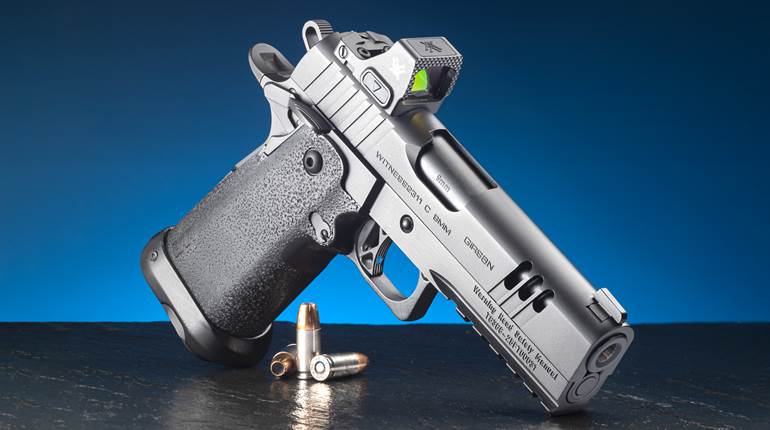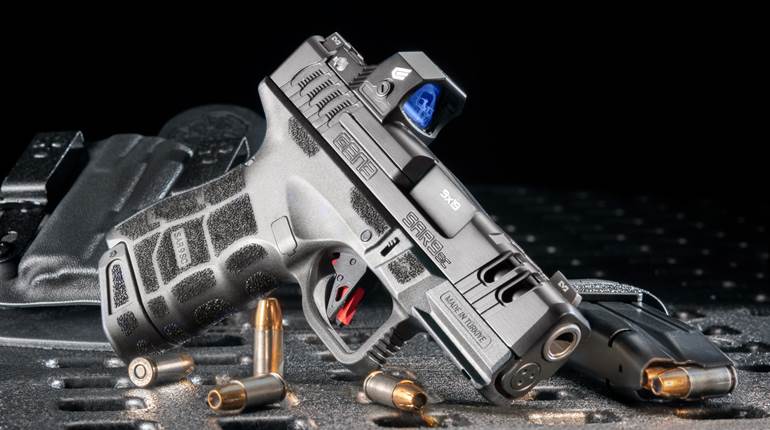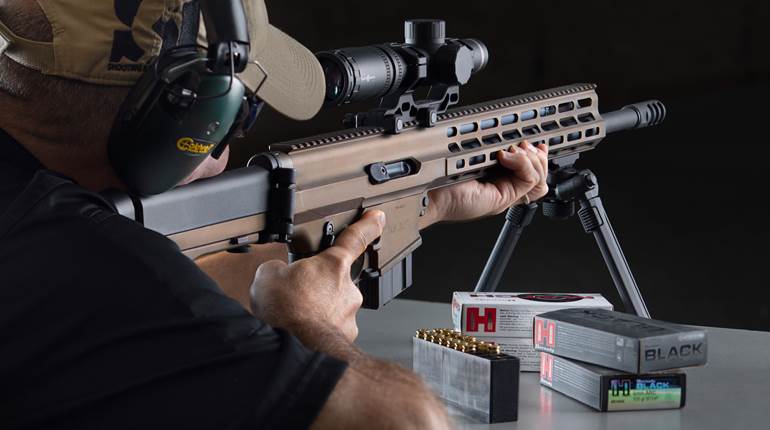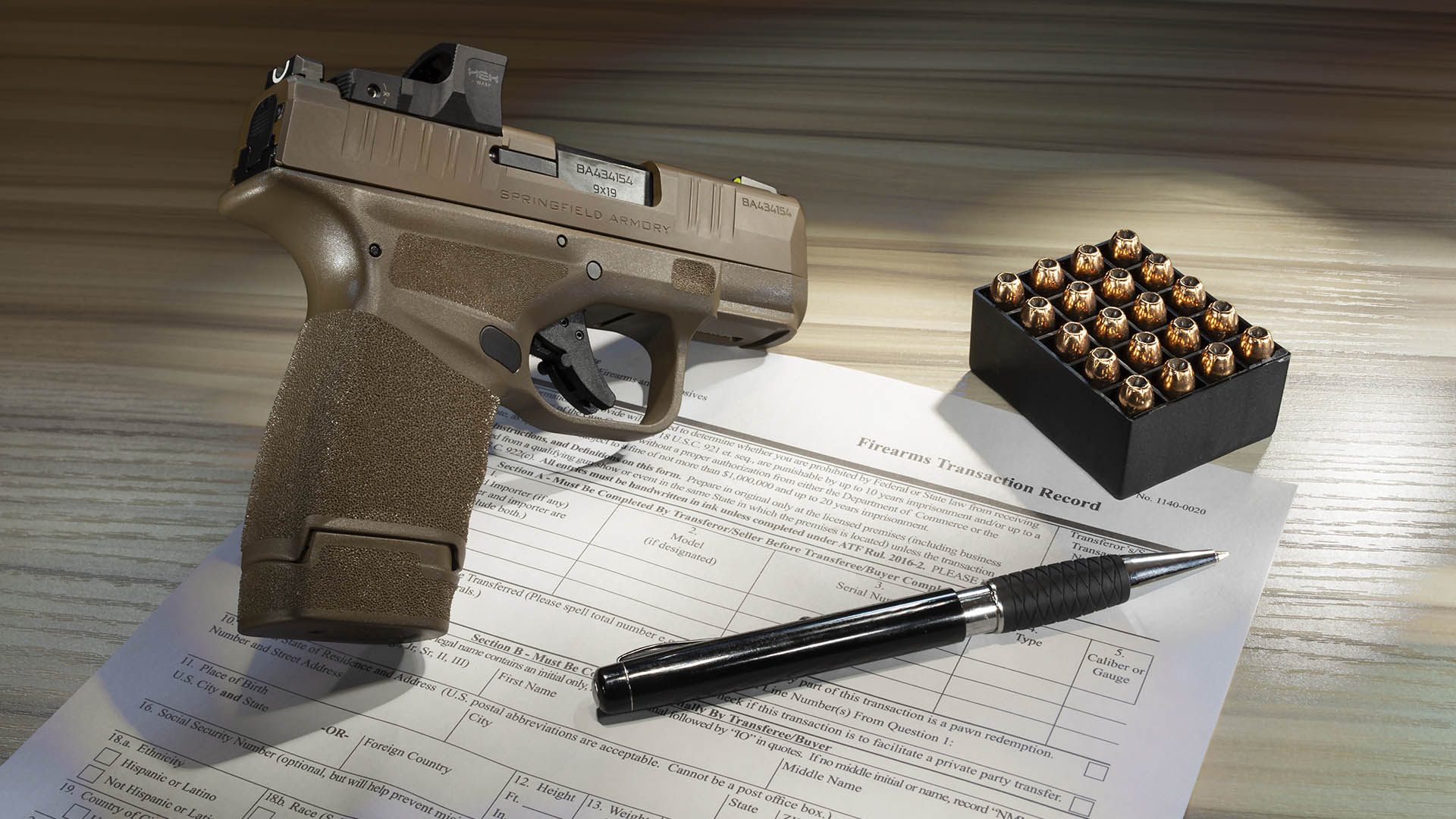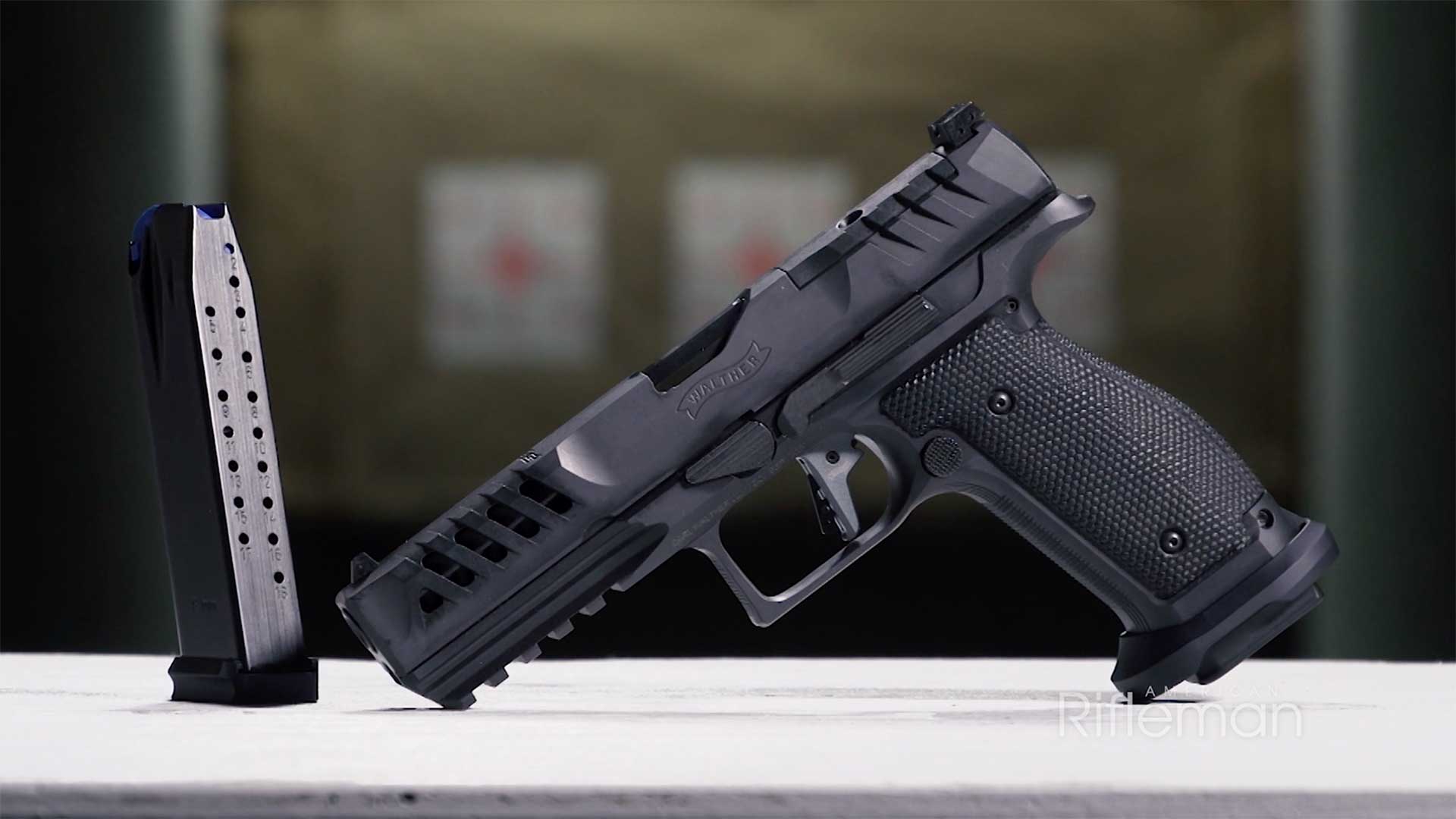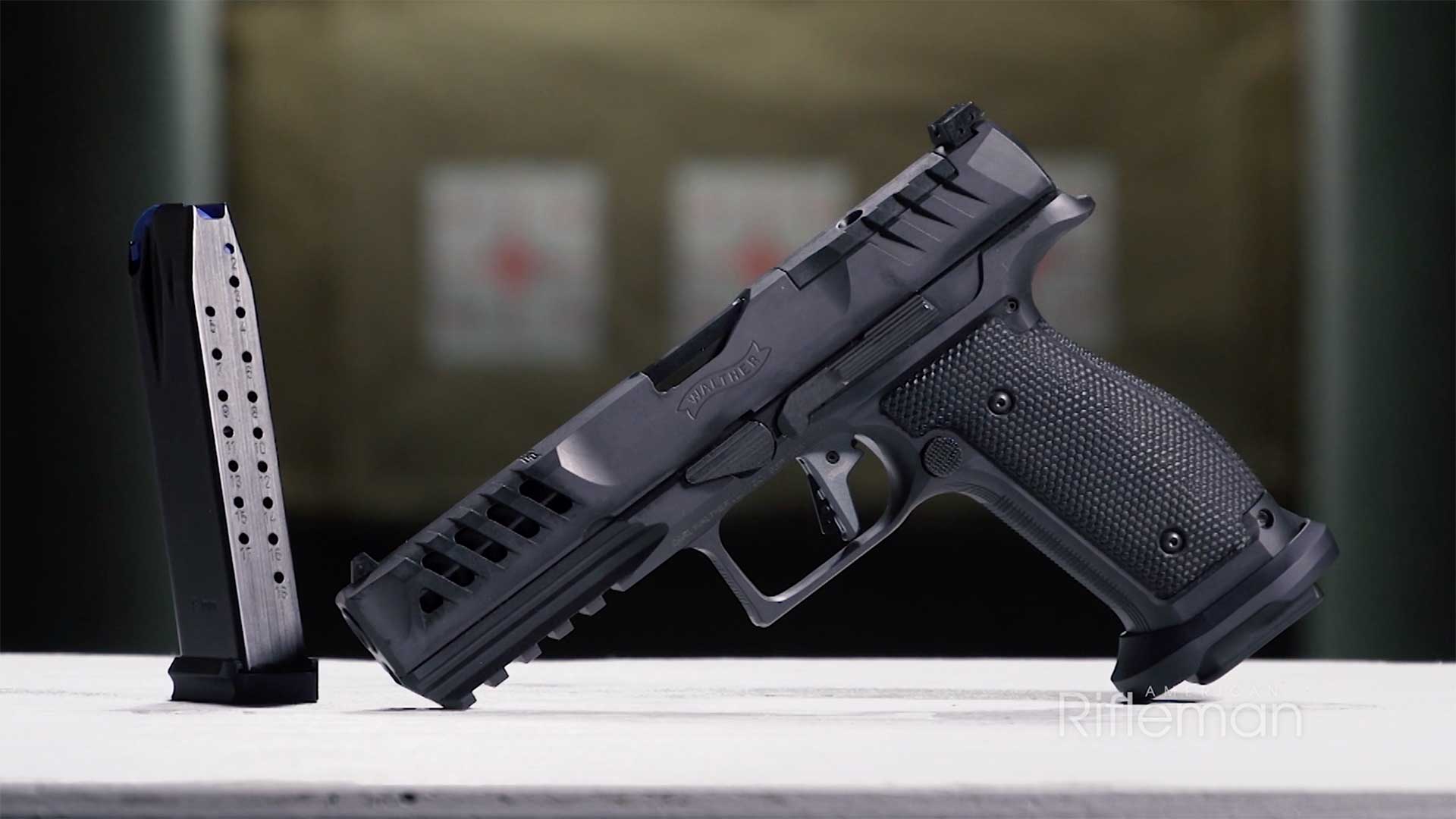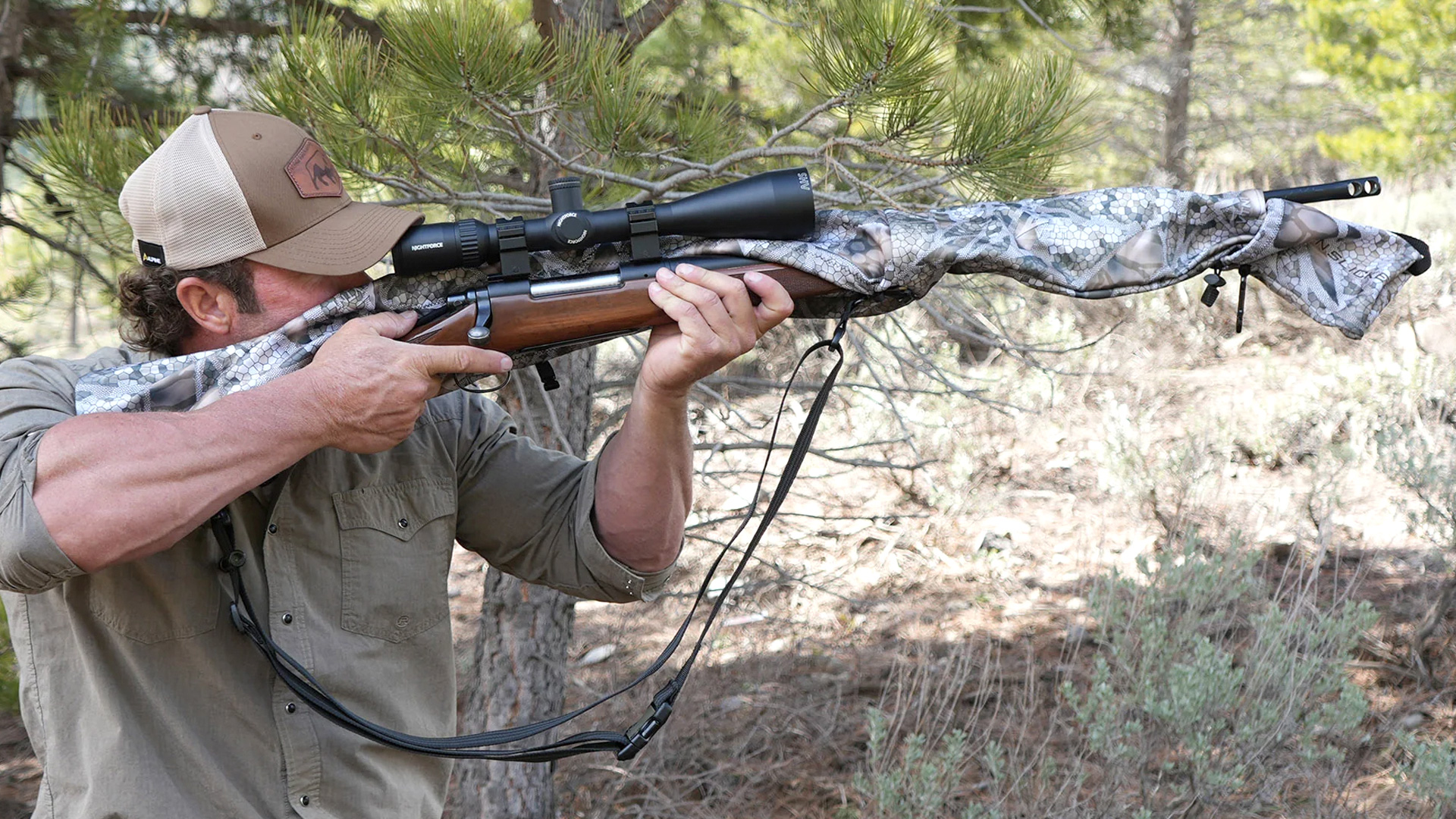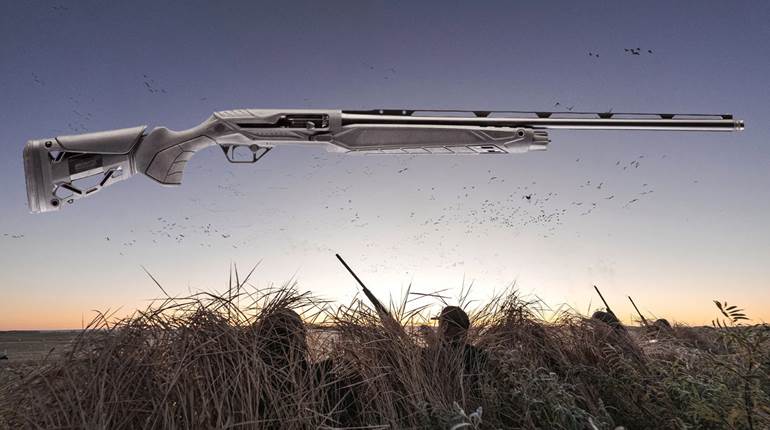
There is no “one-size-fits-all” solution to firearms, and scaled-down “pocket” and EDC pistols provide good examples. Creating a smaller, more concealable, centerfire semi-automatic requires, among other things, a stiffer recoil spring (or springs). Unfortunately, many individuals who prefer smallish semi-automatics lack the physical strength to easily rack the slide as a result. European American Armory Corp. (EAA)’s answer to this quandary is found in the blowback-operated Girsan MC 14T Tip-Up.
Manufactured in Giresun, Turkey, by Girsan, the .380 ACP-chambered semi-automatic employs an uncommon tip-up barrel design to load, which eliminates the need to manually manipulate the slide. Loading the double-action/single-action (DA/SA) pistol is simple. First, activate the bilateral safety. Next, press downward on the tip-up lever, which lifts the rear of the barrel, thereby exposing the chamber for loading. Once a cartridge is inserted, the barrel is pushed downward until it locks. Lastly, the magazine is inserted. The pistol can then be fired by pulling the trigger (double-action) or cocking the hammer (single-action); in either case, it then functions as does any other semi-automatic. Loading via the manual cycling of the slide is an option, too.
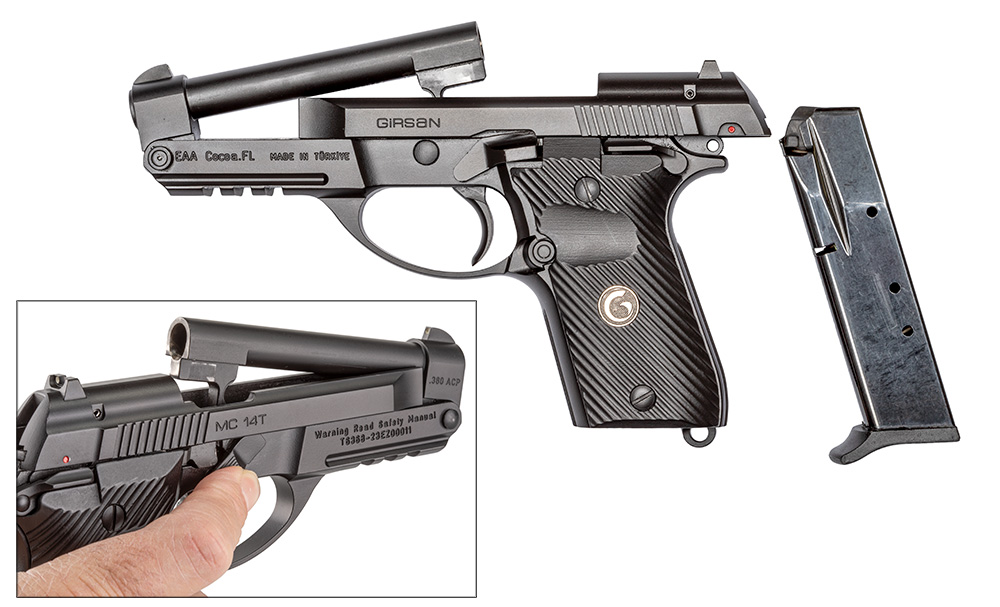
The MC 14T’s frame is made from forged aluminum, and grooves on the backstrap and frontstrap enhance purchase. The composite stocks have material removed behind the left-side magazine-release button and beneath the two-position safety so as to better manipulate those controls. A medallion is inset within each stock panel. A rarity today, there’s a lanyard loop rearward of the magazine well. Moving forward, Girsan prudently provided generous space within the elongated trigger guard, as well as an accessory rail on the dustcover. Interestingly, the frame narrows from 0.83" to 0.64" above the trigger guard, where the tip-up lever is located.
Some of the MC 14T’s fire controls are ambidextrous, while others aren’t. Included among the former are the bilateral safeties and, obviously, the single-stage trigger. In single-action mode, the trigger broke at an average of 5 lbs., 14 ozs.; while in double-action, it measured 7 lbs., 10 ozs. Creep was evident, yet smooth, and reset was surprisingly short. Whereas the magazine release is found on the left side of the pistol, directly behind the trigger, and the slide release/stop is just above it, the tip-up lever is located above the trigger on the right side of the pistol.

The MC 14T’s barrel assembly is common only to other tip-up pistols. The front of the assembly is secured to the frame via a barrel mount pin, which is what permits the barrel to pivot. The 4.50"-long, 0.54"-wide (at the muzzle) barrel has an integral feed ramp. Nearing its front is a fixed, ramped front sight with a white dot.
To be expected, the steel slide is minimalist; at no point does it cover the barrel, as doing so would prevent the barrel from tilting. For that reason, there’s negligible metal to work with. Nearing its aft are cocking serrations, and aggressive ones at that; however, it would be extraordinarily difficult for someone with compromised strength to utilize them—exactly the reason it’s a tip-up pistol. Topping the slide is a dovetailed rear sight featuring a 0.12" notch with dual white dots. Behind the slide, you’ll find the MC 14T’s smallish external hammer.
Lastly, the MC 14T is fed by a staggered-column, 13-round magazine featuring a steel body, witness holes, a plastic follower and a baseplate. A single-loading baseplate is offered separately but is a worthwhile purchase. Here’s why: Rather than fumble with a loose round during an emotionally charged time, the baseplate enables the user to simply grab the magazine, slide the round into the chamber, press down on the now-loaded barrel and insert the magazine into the gun. The pistol has quickly been fully loaded.
Given its barrel length and chambering, we opted to test the sample pistol from a sandbag rest at 15 yards. Five consecutive, five-shot groups were fired with the following loads: Browning BXP Personal Defense 95-grain X-Point; Hornady Black Handgun 90-grain XTP; and Remington UMC 88-grain JHP. Of them, the most accurate proved be that from Hornady, averaging 1.32" for the five total groups. That being said, the economical Remington UMCs produced the single smallest group (0.78") of the day. Suffice it to say, the MC 14T is capable of stellar accuracy—on several occasions, tight four-shot groups opened up on the fifth. During testing, one malfunction occurred; a single Browning BXP round failed to feed into the chamber, but this issue could not be duplicated.
With accuracy testing completed, we then conducted a series of self-defense drills, including engaging multiple targets, with several shots each, in short order. This wasn’t challenging in the least. Given the MC 14T’s mild chambering and aided by its intuitive, three-dot sight configuration, we were able to quickly deliver multiple, accurate shots. Though the stocks are rather smooth, maintaining purchase wasn’t an issue, and neither was felt recoil. That being said, the perceived recoil of the Browning load was noticeably stiffer than the others.
In addition to the traditional blue/black model tested, MC 14T pistols can be had in the following colors: dark earth; gold-plated; two-tone; black/cherry; and black gloss/gold—the latter features wood stocks—and a “Lady” version with a ported barrel was also recently introduced.
While EAA didn’t necessarily break new ground with the Girsan-produced MC 14T Tip-Up pistol, as other tip-up designs have existed, it did combine a variety of features into a solid, steadfast solution ideal for those individuals who struggle with operating the typical semi-automatic centerfire pistol. For that, we commend the company.












